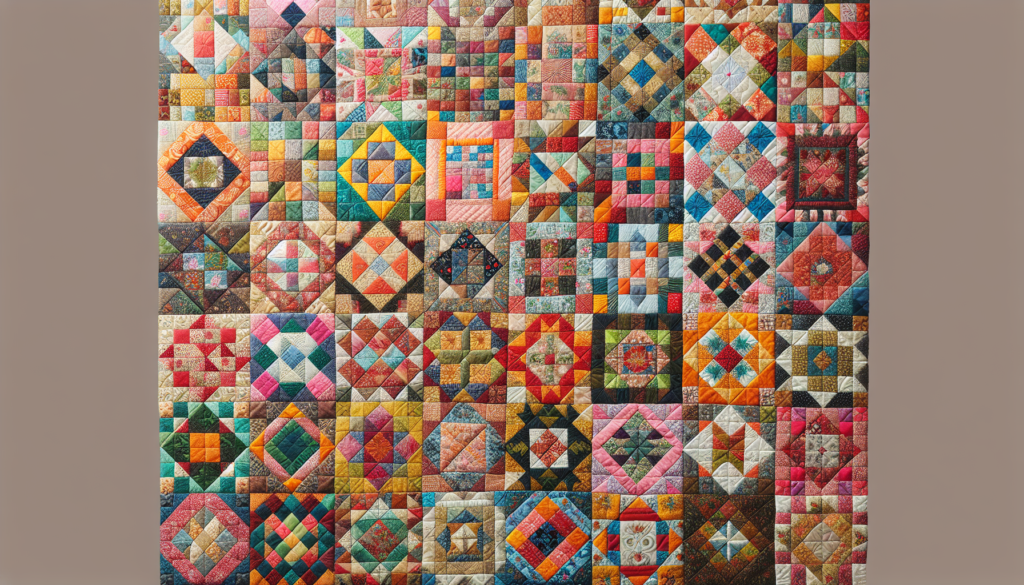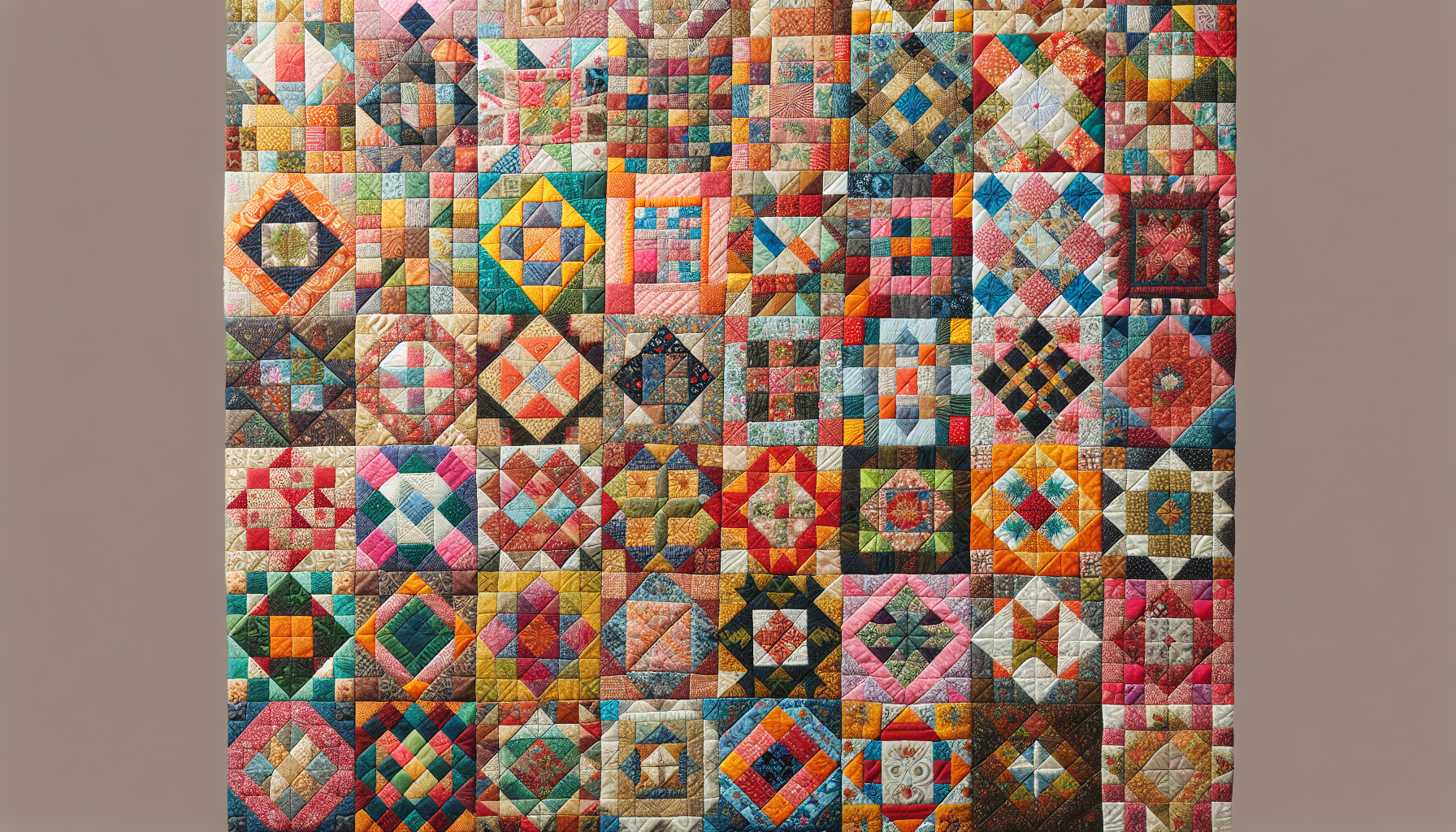If you’ve ever marveled at the intricate beauty of patchwork quilts and wondered how they were created, you’re in for a delightful discovery. In this article, we’ll explore the fascinating world of traditional patchwork techniques. From the rich history behind this art form to the various methods used to stitch together pristine patchwork pieces, prepare to uncover the secrets that have been passed down through generations. Join us on this journey as we unravel the stories woven into each carefully crafted patchwork masterpiece. Traditional patchwork techniques are the foundation of quilting, with a rich history dating back centuries. These techniques have been passed down through generations, allowing quilters to create beautiful and intricate designs. Whether you’re a seasoned quilter or just starting out, it’s important to understand the different traditional patchwork techniques available. In this article, we will explore the various methods, including English Paper Piecing, Hand Piecing, Machine Piecing, Appliqué, Foundation Piecing, Patchwork Quilting, Patchwork Appliqué, Crazy Patchwork, Seminar Technique, and Reverse Appliqué.
English Paper Piecing
English Paper Piecing is a traditional method that involves hand-sewing fabric shapes around paper templates. This technique is perfect for creating complex and precise designs, as the paper templates provide stability and accurate shapes. To begin, you first need to create paper templates in the desired shape. These can be as simple as squares or more intricate shapes like hexagons or diamonds. Then, you’ll baste the fabric around the paper shape and hand-sew the edges together using a whip stitch. Once all the shapes are sewn together, remove the paper templates, and you’ll have a beautiful patchwork design.
Hand Piecing
Hand piecing is another traditional patchwork technique that involves sewing fabric shapes together by hand, without the use of paper templates. This method is ideal for creating curved or irregular shapes, as it allows for more flexibility in the sewing process. To hand-piece, simply align the fabric pieces and use a running stitch or whip stitch to sew them together. This technique requires precision and patience, but the result is a stunning patchwork design that showcases the quilter’s skill and attention to detail.
Machine Piecing
Machine piecing is a faster alternative to hand piecing and is perfect for quilters who prefer working with a sewing machine. This technique allows for faster creation of patchwork designs, as the machine sews stitches quickly and accurately. To machine piece, simply align and sew the fabric pieces together using a straight stitch or a decorative stitch for added flair. While machine piecing may not provide the same level of control as hand piecing, it is an efficient method that produces stunning results.

Appliqué
Appliqué is a traditional patchwork technique that involves attaching fabric shapes to a base fabric, creating intricate and decorative designs. This technique offers endless possibilities for creativity, as you can appliqué shapes in various fabrics, colors, and textures onto a background fabric. There are several methods of appliqué, including needle-turn appliqué, raw-edge appliqué, and fusible appliqué. Needle-turn appliqué involves hand-sewing the fabric shapes onto the base fabric, tucking and turning the edges under. Raw-edge appliqué involves machine or hand-sewing the fabric shapes onto the base fabric with the edges exposed. Fusible appliqué involves using fusible web to attach fabric shapes to the base fabric, then securing them with a machine or hand stitch. Appliqué is a versatile technique that can be used to add intricate details and textures to your patchwork designs.
Foundation Piecing
Foundation piecing, also known as paper piecing, is a technique that involves sewing fabric pieces onto a paper or muslin foundation. This method is perfect for creating precise designs with intricate angles and shapes. To foundation piece, start by placing a fabric piece on the backside of the foundation paper. Then, sew the fabric pieces onto the foundation following the numerical order indicated on the pattern. This technique ensures accurate measurements and eliminates the need for precise cutting and measuring. Once all the fabric pieces are sewn onto the foundation, remove the paper or muslin, and you’ll have a beautifully pieced design.
Patchwork Quilting
Patchwork quilting is the art of sewing together fabric pieces to create a larger quilt top. This technique allows for endless creativity, as you can combine different fabric patterns, colors, and textures to design unique quilt tops. Patchwork quilting can be done using any of the previously mentioned techniques, such as English Paper Piecing, Hand Piecing, Machine Piecing, or Appliqué. To patchwork quilt, simply sew the fabric pieces together in a desired pattern or design, ensuring the seams are aligned and the design is cohesive. Once the quilt top is complete, it can be layered with batting and backing fabric, then quilted together to create a cozy and functional quilt.
Patchwork Appliqué
Patchwork appliqué combines the techniques of patchwork and appliqué to create stunning designs. This technique involves attaching fabric shapes to a base fabric using traditional appliqué methods, but instead of using a single fabric for the appliqué shape, you’ll use patchwork pieces. This allows for endless creativity, as you can experiment with different fabric combinations and create unique patchwork appliqué designs. To patchwork appliqué, simply piece together fabric scraps into a patchwork design, then cut out the desired appliqué shapes and attach them to the base fabric using your preferred method of appliqué.
Crazy Patchwork
Crazy patchwork is a whimsical and vibrant patchwork technique that involves sewing together fabric scraps in an asymmetrical and random manner. This technique allows for complete freedom of design, as there are no rules or limitations on shape or size. Crazy patchwork can be done using any of the stitching methods, such as hand piecing or machine piecing. Once the fabric scraps are sewn together, additional embellishments like embroidery, beads, or lace can be added to further enhance the design. Crazy patchwork is a fun and playful technique that allows quilters to create unique and eclectic patchwork designs.
Seminar Technique
The Seminar Technique is a patchwork method that was popularized by quilting teacher Jinny Beyer. This technique involves using a special ruler or template to cut and sew fabric pieces together. The ruler or template allows for precise measurements and angles, resulting in intricate patchwork designs. The Seminar Technique is a great option for quilters who prefer a more structured approach to patchwork and enjoy working with precise measurements and angles.
Reverse Appliqué
Reverse appliqué is a method that involves layering fabric pieces on top of each other and cutting away the top layer to reveal the fabric underneath. This technique creates a unique and dimensional effect in patchwork designs. To reverse appliqué, start by layering the fabric pieces on top of each other, with the top layer showcasing the desired design. Then, carefully cut away the top layer of fabric, revealing the fabric underneath. Reverse appliqué can be done using hand-sewing or machine-stitching methods, depending on the quilter’s personal preference.
In conclusion, traditional patchwork techniques provide quilters with a range of options to create beautiful and intricate designs. Whether you choose to use English Paper Piecing, Hand Piecing, Machine Piecing, Appliqué, Foundation Piecing, Patchwork Quilting, Patchwork Appliqué, Crazy Patchwork, Seminar Technique, or Reverse Appliqué, each technique offers its unique benefits and challenges. With practice and creativity, you can explore different methods and create stunning patchwork designs that showcase your skills and reflect your personal style. So grab your fabric, thread, and needles, and start exploring the wonderful world of traditional patchwork techniques. Happy quilting!


